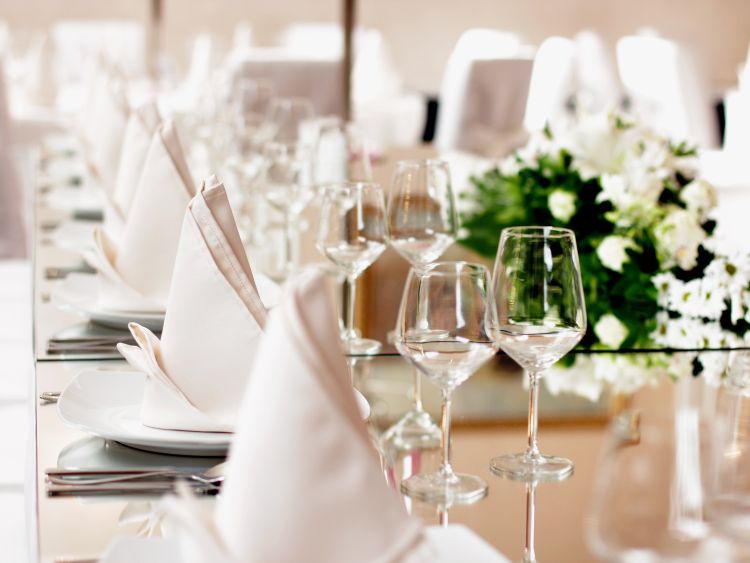Formal vs Black Tie: Understanding the Difference
When you receive an invitation to an event, the dress code can often be the most daunting aspect. Two of the most commonly misunderstood terms in the world of fashion and etiquette are “formal” and “black tie.” While both suggest a certain level of sophistication, they aren’t interchangeable. In this article, we’ll delve into the nuances between formal and black tie attire, helping you navigate your wardrobe with confidence. Whether you’re attending a wedding, gala, or corporate event, knowing the difference can save you from potential faux pas and ensure you make the right impression.
The Importance of Dress Codes
Dress codes exist for a reason—they set the tone for an event and ensure that all attendees are on the same page regarding attire. Ignoring or misinterpreting a dress code can lead to discomfort, both for you and the host. Among the many dress codes, “formal” and “black tie” are among the most specific yet often confused. Understanding what each entails is crucial for any occasion that demands a certain level of elegance and decorum.
What is Formal Attire?
Formal attire, as the name suggests, is reserved for events that require a high level of sophistication. However, the term “formal” can vary slightly depending on the context. Typically, formal attire is less strict than black tie but still demands a polished and elegant look.
- Men’s Formal Attire: For men, formal attire generally means a dark suit, a crisp dress shirt, a tie, and polished shoes. The suit should be well-tailored, usually in shades of black, navy, or charcoal gray. Accessories like cufflinks, a pocket square, and a tie clip can elevate the look but are not mandatory.
- Women’s Formal Attire: Women have a bit more flexibility with formal attire. A cocktail dress, a long dress, or a chic evening suit are all acceptable. The key is to choose something elegant yet understated. Accessories should complement the outfit without overpowering it. Heels are typically expected, but tasteful flats can be acceptable depending on the event.
Formal attire is often required for weddings, business dinners, and formal parties. It allows for personal expression within the boundaries of elegance and sophistication, making it a versatile dress code for various events.
Understanding Black Tie
When an invitation states “black tie,” it’s time to bring out the big guns—your most elegant and refined attire. Black tie is more than just a dress code; it’s a statement of style and sophistication. Traditionally reserved for evening events, black tie demands a level of formality that surpasses the standard formal attire.
- Men’s Black Tie Attire: For men, black tie is synonymous with a tuxedo. A classic black tuxedo with a satin or grosgrain lapel, a white dress shirt, a black bow tie, and black patent leather shoes are the gold standard. The trousers should have a satin stripe down the side, and the ensemble is often completed with a cummerbund or a waistcoat. Accessories like cufflinks, a pocket square, and a formal watch are essential to complete the look.
- Women’s Black Tie Attire: For women, black tie calls for a long evening gown or an elegant cocktail dress. The dress should be sophisticated, made from luxurious fabrics like silk or velvet. Jewelry should be kept tasteful but can be more opulent than with formal attire. High heels are a must, and a small clutch bag is the perfect accessory.
Black tie events include galas, charity balls, and formal weddings. It’s a dress code that leaves little room for improvisation, so sticking to the traditional guidelines is your best bet.
Key Differences Between Formal and Black Tie
Now that we’ve defined what formal and black tie attire entail, let’s break down the key differences between the two.
- Level of Formality: Black tie is more formal than standard formal attire. While formal attire allows for a degree of personal expression, black tie adheres to stricter rules and is generally more conservative.
- Men’s Attire: In formal attire, men can wear a dark suit with a tie, whereas, in black tie, a tuxedo is mandatory. The addition of elements like a bow tie and satin lapels also differentiates black tie from standard formal wear.
- Women’s Attire: Women have more flexibility in formal attire, opting for cocktail dresses or evening suits. However, black tie requires a more refined look, typically a full-length evening gown.
- Occasions: Formal attire is suitable for a wider range of events, from weddings to business dinners. Black tie is reserved for the most formal occasions, such as galas and upscale evening events.
- Accessories: Accessories play a more significant role in black tie attire. For men, this includes a bow tie, cufflinks, and often a cummerbund. For women, black tie accessories can include more opulent jewelry and elaborate hairstyles.
Common Misconceptions About Formal and Black Tie
Despite the clear guidelines, many people still hold misconceptions about what formal and black tie attire entail. Let’s clear up some of the most common myths:
- “Formal and Black Tie Are the Same Thing”: This is perhaps the most common misconception. While both are indeed formal, black tie is a step above standard formal attire in terms of sophistication and specific requirements.
- “You Can Wear a Regular Suit to a Black Tie Event”: This is a big no-no. A regular suit, no matter how well-tailored, does not meet the requirements of a black tie event. A tuxedo is the only acceptable option for men.
- “Cocktail Dresses Are Always Appropriate”: While cocktail dresses are suitable for formal events, they might not always meet the standards of a black tie event. If you’re unsure, opt for a full-length evening gown.
- “Black Tie Means Black Clothing Only”: While black is the traditional color, especially for men, women can wear a variety of colors in their evening gowns. Deep jewel tones, metallics, and even white are acceptable as long as the dress is elegant and appropriate for the occasion.
FAQs About Formal vs Black Tie
Q: Can I wear a dark suit to a black tie event?
A: No, a dark suit, while acceptable for formal attire, is not suitable for a black tie event. A tuxedo is required for black tie.
Q: Are there any exceptions to the black tie dress code?
A: Generally, black tie is a strict dress code with little room for exceptions. However, some events may specify “creative black tie,” which allows for more personal expression, such as wearing a colored bow tie or a patterned jacket.
Q: Can women wear pants to a black tie event?
A: While traditionally, black tie calls for a gown, some modern interpretations allow for women to wear elegant pantsuits or evening trousers, provided they are made from luxurious materials and are styled appropriately.
Q: What shoes are appropriate for formal and black tie events?
A: For formal events, polished leather shoes are acceptable for men, while women can wear heels or elegant flats. For black tie, men should wear black patent leather shoes, and women are expected to wear high heels.
Q: How can I add personal style to a black tie outfit?
A: While black tie is a traditional dress code, there are subtle ways to add personal style. Men can choose a unique bow tie or cufflinks, while women can opt for statement jewelry or a bold lipstick color.
Conclusion: Dressing for Success
Understanding the difference between formal and black tie attire is essential for anyone attending events where these dress codes are specified. By adhering to the guidelines and knowing when to apply each dress code, you’ll not only show respect for the occasion but also feel confident and comfortable in your outfit. Remember, fashion is a form of communication, and the way you dress speaks volumes about your understanding of the event’s tone and significance.
Authoritative Links:
This guide should equip you with the knowledge to confidently tackle any formal or black tie event, ensuring you always make the right impression.



